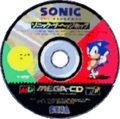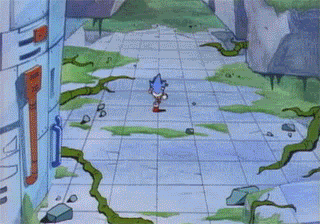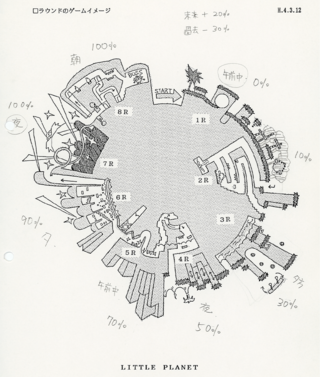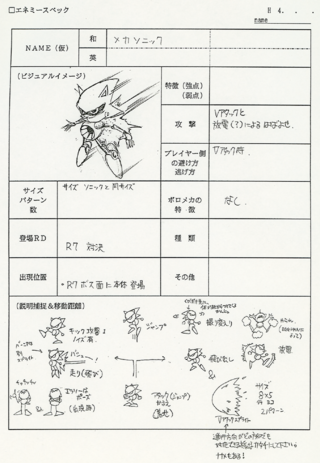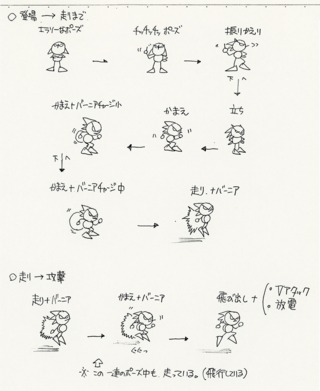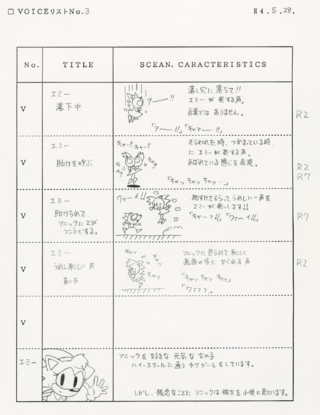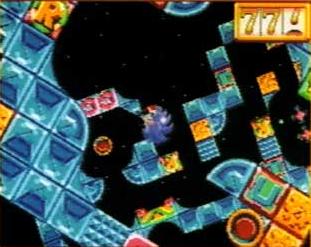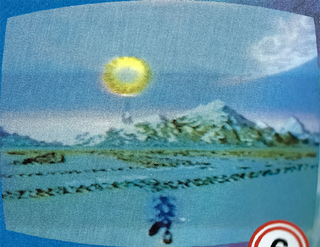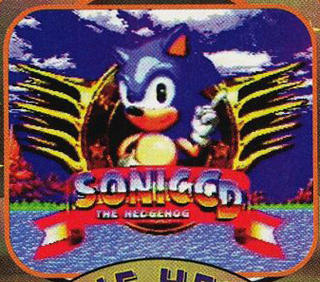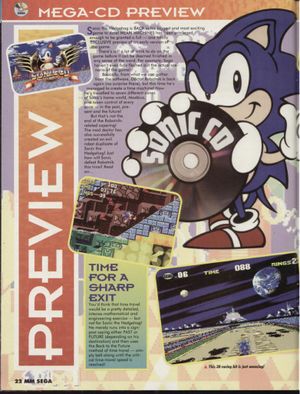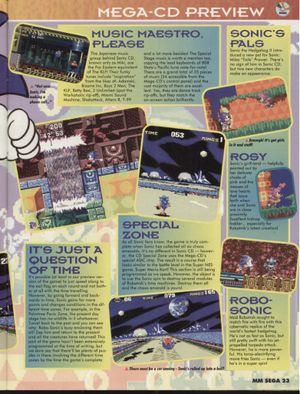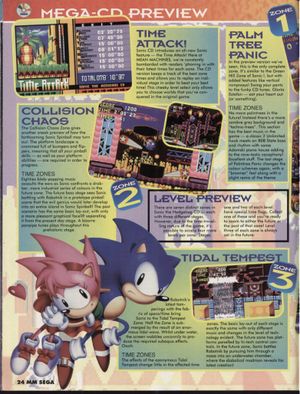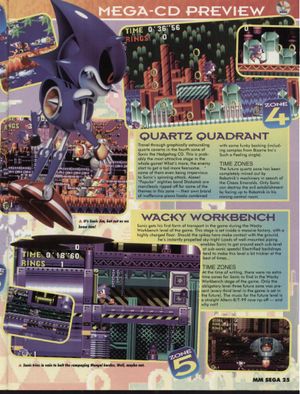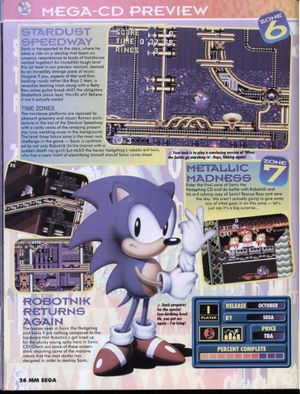Prerelease:Sonic the Hedgehog CD (Sega CD)
This page details pre-release information and/or media for Sonic the Hedgehog CD (Sega CD).
| To do: Sonic Origins features brand-new pieces of concept art for Sonic CD. Rip them and add them here. |
Sonic CD had an interesting development cycle, beginning as a Sega CD version of Sonic the Hedgehog. A lot of concepts considered for the game were never implemented or are not in any known prototypes.
Contents
Development
Unlike Sonic's direct sequels, Sonic CD was handled by Sega of Japan with Sonic's original character designer, Naoto Ohshima, being the game's director, with the intention of making Sonic CD a "CD version" of Sonic 1. At one point, Ohshima wanted the time to change seamlessly, but limitations with the hardware resulted in a "loading" screen being created when time-traveling.
- Sonic CD wasn't Sonic 2; it was really meant to be more of a CD version of the original Sonic. I can't help but wonder, therefore, if we had more fun making CD than they did making Sonic 2 [because we didn't have the pressure of making a "numbered sequel"]. - Naoto Ohshima
Seen in a video displayed at the Summer CES 1992 (3:31) is the only known footage of the Sega CD version of Sonic the Hedgehog, though given that there are zero differences to be seen, it's possible this is simply footage of the Genesis original.
A physical disc copy of what appears to be Sonic 1 on the Sega CD was posted on Sonic Team's old (now defunct) website in 1996/97. The text accompanied by the image implies it may have only been a disc design, possibly before a Sega CD Sonic game entered development, and not a real build of a game.
When it came to new characters, Amy Rose was taken from the obscure 1992 Shogakukan manga, though unlike the manga Sonic straight-up ignores Amy, while in the manga he and Amy are a couple. Metal Sonic, on the other hand, was designed to be a near-perfect rival of Sonic, which is likely what made him a recurring character throughout the series.
Rounds
Original Names
When Sonic CD was in early development, the stages had bizarre, possibly placeholder, names. So far, only two are known:
- Palmtree Panic was originally called "Salad Plain". This is the only original name that is known to be in the game's prototypes, specifically the v0.02 prototype.
- Wacky Workbench was originally called "Crazy Toy Box". This was revealed twice by Masato Nishimura, the game's landscape designer, in 2020 and 2021, and he also noted that the Present theme of Wacky Workbench contains a vocoder that says "Crazy Toy Box".
Dubious Depths
"Dubious Depths" (commonly known as "R2") is a stage that was cut from the final release. Its existence was proven through examining the game files on a PC or through the level select. In both cases, the levels skip from R1 (Palmtree Panic) to R3 (Collision Chaos); R2 is nowhere to be found. Naoto Ohshima revealed the stage's name was "Dubious Depths" in a January 2023 Twitter DM. Masato Nishimura also confirmed this, but also gave a presumably earlier name, "Ridicule Root" (at first misspelled as "Riddical Root"). Media relating to the stage includes concept art shown in the developer's diary in 2011 and surviving enemy and boss sprites that Christian Whitehead (who developed the 2011 remake) shared in 2013.
Dubious Depths is only explicitly referenced in the v0.02 prototype, where it is listed as an entry on the Time Attack menu. The stage itself is not in any known prototypes or prerelease screenshots/mockups, and details surrounding it have proved difficult to verify. What is known of Dubious Depths is that it was set in ancient ruins; the concept art suggests that the level was similar to Aquatic Ruin Zone from Sonic 2. It's commonly speculated that Dubious Depths would have been the Sonic CD equivalent to Marble Zone from the original Sonic the Hedgehog, as most of Sonic CD's level themes are directly based on Zones from Sonic 1 and follow the same order: Palmtree Panic as Green Hill; Collision Chaos as Spring Yard; Tidal Tempest as Labyrinth; Stardust Speedway as Starlight; and Metallic Madness as Scrap Brain/Final.
A seven-second segment of the uncut ending animation depicts Sonic running through an ancient ruins-type area containing metallic structures, vegetation, and stone bricks that collapse when Sonic runs across them. The segment is commonly believed to depict Dubious Depths, as it bears little resemblance to any stage in the released game and features an Antlion, a Badnik included in the Dubious Depths enemy sprites. Whitehead endorsed the idea that the scene is set in Dubious Depths when he shared the sprites in 2013, but Ohshima stated in an August 2023 DM he did not think it was.
Several reasons have been provided for Dubious Depths' removal:
- In a 2000 interview, Jim Trethewey (who helped develop the 1996 Windows port) said that, from a discussion with Junetsu Kakuta (who worked on the Sega CD version), he got the impression that it was removed due to quality and design concerns: "my impression from him is that the designer of [Dubious Depths] didn't do a very good job, so they left it out of the final product."
- In a 2011 tweet, Masato Nishimura said that Dubious Depths was cut because Sonic CD was supposed to shift between speed-oriented odd-numbered stages and "technical", platforming-based even-numbered stages. Both Dubious Depths and Collision Chaos, Nishimura recalled, had been designed as platforming-based, so the decision was made to cut Dubious Depths but keep Collision Chaos.
- In a 2022 tweet, Nishimura provided a different reason: Dubious Depths' music data did not fit within a CD-ROM, which, coupled with a tight development schedule, forced its removal.
- In the 2023 Twitter DM, Naoto Ohshima suggested the removal of Dubious Depths was possibly due to the level not matching Sonic's speed.
According to Nishimura in his 2011 tweet, the Present time zone music of Dubious Depths got repurposed as the D.A. Garden theme. The melody of its theme can be briefly heard in "Techno Power Mix", the second track of Masafumi Ogata's 1994 album Sonic the Hedgehog - Remix. "Sonic After-6290" also contains the melody.
United States Soundtrack
During the localization process in the US, the soundtrack was completely overhauled due to Sega of America finding them too similar to the electronic dance scores made at the time, and hired Spencer Nielsen to redo the soundtrack in just one month. The only tracks that weren't changed were the Past tracks, due to being sequenced audio and thus harder to edit.
Concept Art
Game
Concept art of Little Planet, dated March 12, 1992. This concept art is most notable for featuring an outline of the deleted round, Dubious Depths. The artwork suggests that the round was similar in design to Marble Zone from Sonic the Hedgehog, featuring similar level tropes such as the swinging platforms, underground sections, and spike traps. There is also a giant fan.
Aside from this, each round except for Dubious Depths has the time of day listed above it: Palmtree Panic takes place during the morning, Collision Chaos during the evening, Tidal Tempest at night, Quartz Quadrant during the morning, Wacky Workbench during the evening, Stardust Speedway at night, and Metallic Madness at dawn.
The rounds also have percentages above them, which seem to represent how much influence Eggman has over them in the present: Palmtree Panic is at 0%, Dubious Depths is at 10%, Collision Chaos is at 30%, Tidal Tempest is at 50%, Quartz Quadrant is at 70%, Wacky Workbench is at 90%, and Stardust Speedway and Metallic Madness are both at 100%. The top-right of the document reads "Future + 20%" and "Past - 30%", likely a note for how much Eggman's influence would be changed in these time periods.
Some documents that lay out the plan for the Metal Sonic race in Stardust Speedway. At this point in time, the character was named "Mecha Sonic", the same name as the robot Sonic in Sonic 2. This was likely a coincidence, as both games were developed at the same time by different development teams.
This document from May 28, 1992 shows that Amy was supposed to appear in the deleted level, Dubious Depths, where she would fall into a pit and at some point be kidnapped. In the final game, the latter event was moved to the start of Collision Chaos instead.
Animation
Reference sheets were created by Hisashi Eguchi of Studio Junio to be used by the animators of the opening and ending.
The final version of Sonic's reference sheet. It now includes the color codes that would be used on the animation cels. One last revision was made to the design itself; the eye pupils were changed from a curved bean shape to a straight oval shape. The curved pupils were still used in the original animations by Studio Junio, but they were corrected to the oval shape in the Mega CD versions.
Special Stage Screenshots
Early Special Stage
The Sonic CD Special Stages were originally going to build upon the framework of Sonic 1's, in which Sonic navigated a rotating maze. Unlike the Sonic 1 Special Stage, there were to be two rotating layers that the player switched between. According to planner Hiroaki Chino, the developers thought the Special Stage was too slow, so they reworked it to take better advantage of the Sega CD hardware. According to Masato Nishimura, the Special Stage was displayed on a video exhibit that was shown at a 1992 toy show. The only known screenshot of this Special Stage comes from the 1992 Sega Summer Catalog. This type of idea would later be used 30 years later in Sonic Superstars.
Later Special Stage
This screenshot shows that at one point in development some yellow objects similar to balloons were going to be used instead of UFOs; either that, or the balloon is simply a part of the background. It is unknown if this image is a mockup or not. It also features an unused background never seen in the retail release or in any known prototype.
Post-v0.02 Build
Palmtree Panic
| To do: The first screenshot is of 0.28A, not 510. I'll get to replacing that soon. |
| v0.02 | Post-v0.02 | 510 Proto |
|---|---|---|

|
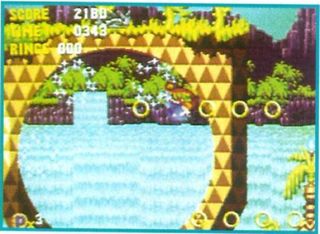
|
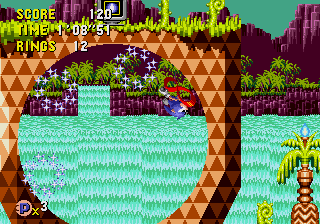
|
An early version of Palmtree Panic Zone 1 Past. The only notable difference in this picture is the ring layout.
| Post-v0.02 | 510/0.28A | Proto 621 Onward |
|---|---|---|
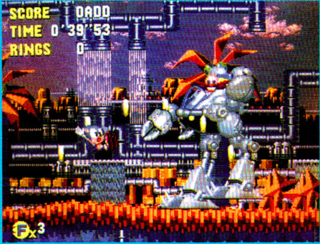
|
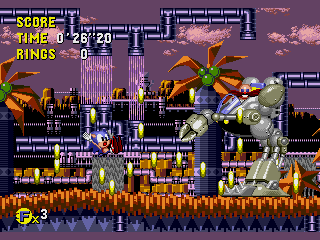
|
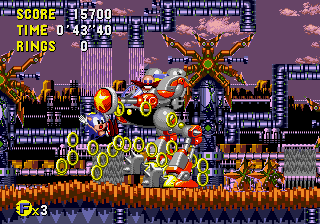
|
Originally, the Palmtree Panic Zone boss was mostly grey and had pincers instead of the final version's bumpers. The level also appears to share the same tileset as in the 0.02 build. Both the boss and tileset can be seen in the 510/0.28A prototypes.
Collision Chaos
| Post-v0.02 | 510 Proto |
|---|---|
 |
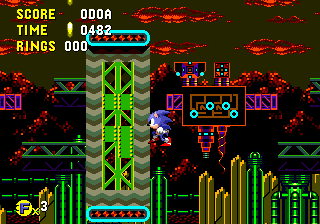 |
An early version of Collision Chaos Zone 2 Bad Future that predates 510, with a different color palette. The mountains, clouds, neon signs, and main terrain are a shade of blue, and the pipes in the background are red.
| Post-v0.02 | 510 Proto |
|---|---|
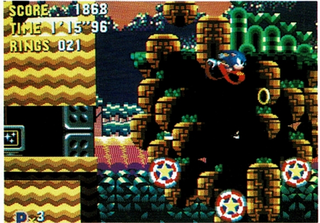 |
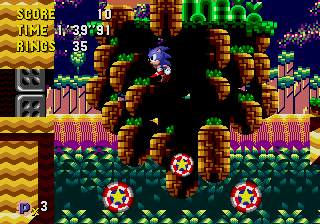 |
An earlier version of Collision Chaos Zone 1 Past that predates 510 as there is a monitor on the left that appears to be from the present's object layout, the bumpers are positioned differently compared to 510, and the background chunk placement also seems to be different.
EGM Articles
| To do: Multiple things:
|
Preview from Issue #049 (August 1993)
Preview from Issue #050 (September 1993)
Title Screen Differences
In Issue #50 (September 1993) of Electronic Gaming Monthly, various screens from a late prototype exhibit a Sonic that's drawn subtly differently from every other version of the game.
The Sonic rendered in this title screen bears a strong resemblance to the version seen in the Windows 95 port. Specifically, his eyelids are thicker and rounder, and his pupils are centered in his eyes, resulting in him facing directly at the player. Said facial details would also require the highlights on his forehead to be adjusted in the final release. His left shoulder is also lowered.
| EGM #50 Image | Windows 95 Version |
|---|---|
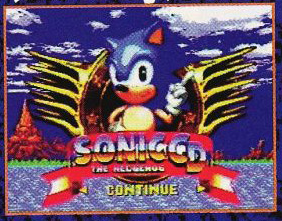 |
 |
The mere existence of these screenshots could potentially point to an unknown build with a short-lived alteration to Sonic's appearance, slotted somewhere in between the Ver 0.28A and Ver 0.51 builds.
| Ver0.02 to Ver0.28A | Beep! Megadrive August 1993 | EGM #50 | Ver0.51 to Final |
|---|---|---|---|
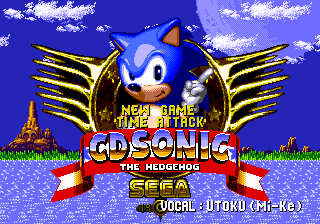
|
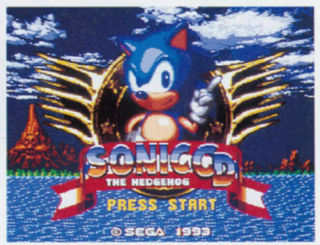
|

|
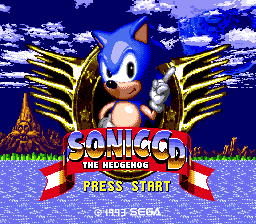
|
Misc. Differences
It's not just the title screen that got changed.
The Super Peel-out is referred to as a "new Super Spin-Dash", while the spinners are referred to as "turrets".
It seems like Final Fever (a planned but scrapped Round from the 2011 remake of Sonic CD) was planned to be in the original game. Additionally, Wacky Workbench is listed as the fourth Round rather than the fifth, while the fifth Round is listed as "Palmtree Panic Zone", possibly as a placeholder for Quartz Quadrant's name. The Rounds' names all contain the word "Zone" except for Final Fever, despite being referred to as "Rounds" elsewhere in the article. In the final game, the word "Zone" is used in the same way as the word "Act" in the other Genesis Sonic games.
Finally, the magazine claims that the game was going to feature 70+ levels. It seems like this number counts each time period of each Zone (or Act) as a separate level. There are 7 Rounds, each with 2 regular Zones and one boss Zone. The regular Zones have four time periods each, and the boss Zones have two time periods each, so this comes to a total of exactly 70. However, if Final Fever was initially planned to be a separate stage, and/or if the Special Stages are counted in that total, then the total number of levels would be slightly higher than 70.
Special stages are referred to as "Bonus Rounds".
Metal Sonic here is called by his development name, Mecha Sonic (not to be confused with Mecha Sonic from Sonic 2 or Mecha Sonic Mk. II from Sonic & Knuckles). Amy Rose is called "Amy the Rose", possibly a misinterpretation from the magazine. Also, Dr. Eggman (called Robotnik in the West during this time) is called "Dr. Robotnick", probably an error from the magazine.
Metal Sonic being called Mecha Sonic again, and Amy is now the sidekick, unlike the previous issue when it was stated that Sonic had no sidekick. Amy's name is once again changed to "Rosy the Rascal".
More odd names for various animations, likely just created by the magazine.
Although 0.02 has all four time periods already, the magazine only has screenshots of Bad Future and Present. Good Future doesn't seem to be mentioned, while Past is said to not be available yet. The Past timepost is also shown off.
More Mecha Sonic, Time Attack still exists (but is a little closer to the final game's Time Attack), and saving via "the backup RAM on the CD drive." Special Stages also seem to exist now.
Mean Machines Preview
| To do: A few things:
|
Mean Machines #012
Mega Force Preview
Mega Force #020 (August 1993)
